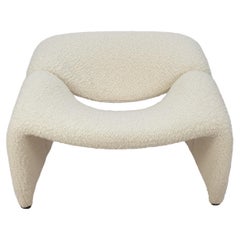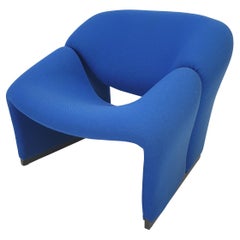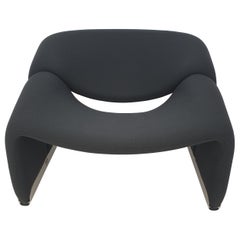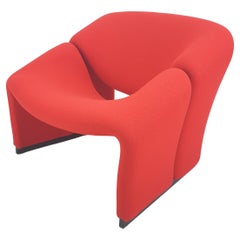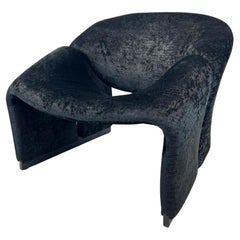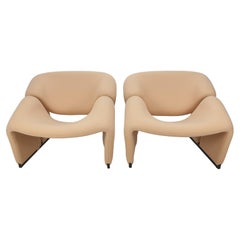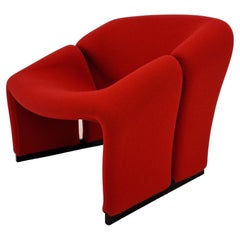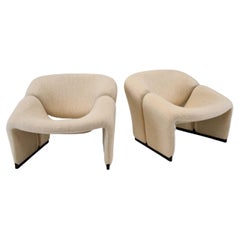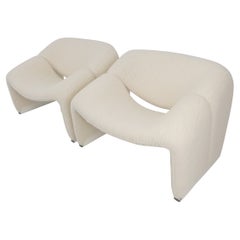Artifort Groovy
Vintage 1980s Dutch Mid-Century Modern Armchairs
Aluminum
Vintage 1960s Dutch Mid-Century Modern Armchairs
Metal
Vintage 1980s Dutch Mid-Century Modern Armchairs
Aluminum
Vintage 1960s Dutch Mid-Century Modern Armchairs
Metal
Vintage 1960s Dutch Mid-Century Modern Armchairs
Metal
Vintage 1960s Dutch Mid-Century Modern Armchairs
Metal
Vintage 1960s Dutch Mid-Century Modern Armchairs
Metal
Vintage 1960s Dutch Mid-Century Modern Armchairs
Metal
Vintage 1980s Dutch Mid-Century Modern Armchairs
Metal
Vintage 1960s Dutch Mid-Century Modern Armchairs
Metal
Vintage 1960s Dutch Mid-Century Modern Armchairs
Metal
Vintage 1960s Dutch Mid-Century Modern Armchairs
Metal
Vintage 1970s Dutch Mid-Century Modern Lounge Chairs
Metal
Vintage 1970s Dutch Mid-Century Modern Lounge Chairs
Metal
Vintage 1970s Dutch Mid-Century Modern Lounge Chairs
Metal
Mid-20th Century Dutch Mid-Century Modern Lounge Chairs
Steel
Vintage 1970s Dutch Space Age Armchairs
Steel
Vintage 1970s Dutch Mid-Century Modern Lounge Chairs
Metal
Vintage 1960s Dutch Mid-Century Modern Chairs
Metal
Vintage 1970s French Mid-Century Modern Lounge Chairs
Steel
Vintage 1970s Dutch Mid-Century Modern Lounge Chairs
Metal
Vintage 1970s Dutch Mid-Century Modern Lounge Chairs
Aluminum
Mid-20th Century Dutch Mid-Century Modern Lounge Chairs
Steel
Vintage 1970s Dutch Mid-Century Modern Lounge Chairs
Metal
Vintage 1970s European Mid-Century Modern Lounge Chairs
Fabric
Vintage 1960s Dutch Chairs
Wool, Bouclé
Mid-20th Century Dutch Mid-Century Modern Lounge Chairs
Metal
Vintage 1980s Dutch Modern Armchairs
Metal
Vintage 1960s Lounge Chairs
Fabric
Vintage 1960s French Post-Modern Chairs
Steel
Mid-20th Century European Mid-Century Modern Lounge Chairs
Fabric
Vintage 1970s Dutch Mid-Century Modern Armchairs
Fabric
Mid-20th Century Dutch Mid-Century Modern Lounge Chairs
Metal
Mid-20th Century Belgian Mid-Century Modern Armchairs
Metal
Vintage 1970s Dutch Mid-Century Modern Lounge Chairs
Iron
Vintage 1960s Armchairs
Metal
Vintage 1960s Armchairs
Bouclé
Vintage 1960s Sectional Sofas
Metal
Vintage 1960s Sectional Sofas
Metal
Vintage 1960s Dutch Mid-Century Modern Lounge Chairs
Metal
20th Century Dutch Lounge Chairs
Steel
Vintage 1970s Dutch Mid-Century Modern Chairs
Aluminum
Vintage 1970s Dutch Mid-Century Modern Lounge Chairs
Metal
Vintage 1970s French Mid-Century Modern Lounge Chairs
Fabric
Vintage 1970s French Mid-Century Modern Club Chairs
Wool
Vintage 1980s Dutch Mid-Century Modern Armchairs
Wool
Mid-20th Century Mid-Century Modern Lounge Chairs
Vintage 1970s Dutch Mid-Century Modern Lounge Chairs
Aluminum
Vintage 1970s Dutch Mid-Century Modern Lounge Chairs
Aluminum
Vintage 1970s Dutch Mid-Century Modern Lounge Chairs
Aluminum
Vintage 1970s Dutch Mid-Century Modern Lounge Chairs
Aluminum
20th Century Dutch Modern Lounge Chairs
Steel
Vintage 1970s Dutch Mid-Century Modern Lounge Chairs
Aluminum
Vintage 1970s Dutch Mid-Century Modern Lounge Chairs
Aluminum
Vintage 1970s Dutch Mid-Century Modern Lounge Chairs
Aluminum
Vintage 1970s Dutch Mid-Century Modern Lounge Chairs
Aluminum
Vintage 1970s Dutch Mid-Century Modern Lounge Chairs
Aluminum
Vintage 1970s Dutch Mid-Century Modern Lounge Chairs
Aluminum
- 1
Artifort Groovy For Sale on 1stDibs
How Much is a Artifort Groovy?
Pierre Paulin for sale on 1stDibs
Pierre Paulin introduced a fresh breeze into French furniture design in the 1960s and ’70s, fostering a sleek new Space-Age aesthetic. Along with Olivier Mourgue, Paulin developed chairs, sofas, dining tables and other furnishings with flowing lines and almost surreal naturalistic forms. And his work became such a byword for chic, forward-looking design and emerging technologies that two French presidents commissioned him to create environments in the Élysée Palace in Paris.
Paulin was born in Paris to a family of artists and designers. He initially sought to become a ceramist and sculptor and was studying in the town of Vallauris near the Côte d'Azur — a center for pottery making, where Pablo Picasso spent his postwar summers crafting ceramics — but broke his hand in a fight. He enrolled at the École Camondo, the Paris interior design school. There, Paulin was strongly influenced by the work of Charles and Ray Eames, George Nelson and Arne Jacobsen, as was reflected in his early creations for the manufacturer Thonet-France.
It was at the Dutch firm Artifort, which he joined in 1958, where Paulin blossomed. In a few years, he produced several of his signature designs based on abstract organic shapes. These include the Butterfly chair (1963), which features a tubular steel frame and slung leather, and a group of striking seating pieces made with steel frames covered in polyurethane foam and tight jersey fabric: the Mushroom (1960), Ribbon (1966) and Tongue (1967) chairs. The revered designer not only introduced new construction techniques to Artifort furniture but contributed fresh materials, Pop art colors and dazzling shapes to the mid-century modern era as a whole.
In 1971, the Mobilier National — a department of France’s Ministry of Culture in charge of furnishing top-tier government offices and embassies — commissioned Paulin to redesign President Georges Pompidou’s private apartment in the Élysée Palace. In three years, Paulin transformed the staid rooms into futuristic environments with curved, fabric-clad walls and furnishings such as bookcases made from an arrangement of smoked-glass U shapes, flower-like pedestal chairs and pumpkin-esque loungers.
Ten years later, the Mobilier National called on Paulin again, this time to furnish the private office of President François Mitterand. Paulin responded with an angular, postmodern take on neoclassical furniture, pieces that looked surprisingly at home in the paneled, Savonnerie-carpeted Louis XVI rooms. As those two Élysée Palace projects show, Paulin furniture works well both in a total decor or when used as a counterpoint to traditional pieces. His creations have a unique personality: bright and playful yet sophisticated and suave.
Find vintage Pierre Paulin lounge chairs, armchairs, coffee tables and other furniture on 1stDibs.
A Close Look at Mid-century Modern Furniture
Organically shaped, clean-lined and elegantly simple are three terms that well describe vintage mid-century modern furniture. The style, which emerged primarily in the years following World War II, is characterized by pieces that were conceived and made in an energetic, optimistic spirit by creators who believed that good design was an essential part of good living.
ORIGINS OF MID-CENTURY MODERN FURNITURE DESIGN
- Emerged during the mid-20th century
- Informed by European modernism, Bauhaus, International style, Scandinavian modernism and Frank Lloyd Wright’s architecture
- A heyday of innovation in postwar America
- Experimentation with new ideas, new materials and new forms flourished in Scandinavia, Italy, the former Czechoslovakia and elsewhere in Europe
CHARACTERISTICS OF MID-CENTURY MODERN FURNITURE DESIGN
- Simplicity, organic forms, clean lines
- A blend of neutral and bold Pop art colors
- Use of natural and man-made materials — alluring woods such as teak, rosewood and oak; steel, fiberglass and molded plywood
- Light-filled spaces with colorful upholstery
- Glass walls and an emphasis on the outdoors
- Promotion of functionality
MID-CENTURY MODERN FURNITURE DESIGNERS TO KNOW
- Charles and Ray Eames
- Eero Saarinen
- Milo Baughman
- Florence Knoll
- Harry Bertoia
- Isamu Noguchi
- George Nelson
- Danish modernists Hans Wegner and Arne Jacobsen, whose emphasis on natural materials and craftsmanship influenced American designers and vice versa
ICONIC MID-CENTURY MODERN FURNITURE DESIGNS
- Eames lounge chair
- Nelson daybed
- Florence Knoll sofa
- Egg chair
- Womb chair
- Noguchi coffee table
- Barcelona chair
VINTAGE MID-CENTURY MODERN FURNITURE ON 1STDIBS
The mid-century modern era saw leagues of postwar American architects and designers animated by new ideas and new technology. The lean, functionalist International-style architecture of Le Corbusier and Bauhaus eminences Ludwig Mies van der Rohe and Walter Gropius had been promoted in the United States during the 1930s by Philip Johnson and others. New building techniques, such as “post-and-beam” construction, allowed the International-style schemes to be realized on a small scale in open-plan houses with long walls of glass.
Materials developed for wartime use became available for domestic goods and were incorporated into mid-century modern furniture designs. Charles and Ray Eames and Eero Saarinen, who had experimented extensively with molded plywood, eagerly embraced fiberglass for pieces such as the La Chaise and the Womb chair, respectively.
Architect, writer and designer George Nelson created with his team shades for the Bubble lamp using a new translucent polymer skin and, as design director at Herman Miller, recruited the Eameses, Alexander Girard and others for projects at the legendary Michigan furniture manufacturer.
Harry Bertoia and Isamu Noguchi devised chairs and tables built of wire mesh and wire struts. Materials were repurposed too: The Danish-born designer Jens Risom created a line of chairs using surplus parachute straps for webbed seats and backrests.
The Risom lounge chair was among the first pieces of furniture commissioned and produced by celebrated manufacturer Knoll, a chief influencer in the rise of modern design in the United States, thanks to the work of Florence Knoll, the pioneering architect and designer who made the firm a leader in its field. The seating that Knoll created for office spaces — as well as pieces designed by Florence initially for commercial clients — soon became desirable for the home.
As the demand for casual, uncluttered furnishings grew, more mid-century furniture designers caught the spirit.
Classically oriented creators such as Edward Wormley, house designer for Dunbar Inc., offered such pieces as the sinuous Listen to Me chaise; the British expatriate T.H. Robsjohn-Gibbings switched gears, creating items such as the tiered, biomorphic Mesa table. There were Young Turks such as Paul McCobb, who designed holistic groups of sleek, blond wood furniture, and Milo Baughman, who espoused a West Coast aesthetic in minimalist teak dining tables and lushly upholstered chairs and sofas with angular steel frames.
Generations turn over, and mid-century modern remains arguably the most popular style going. As the collection of vintage mid-century modern chairs, dressers, coffee tables and other furniture for the living room, dining room, bedroom and elsewhere on 1stDibs demonstrates, this period saw one of the most delightful and dramatic flowerings of creativity in design history.
Finding the Right Seating for You
With entire areas of our homes reserved for “sitting rooms,” the value of quality antique and vintage seating cannot be overstated.
Fortunately, the design of side chairs, armchairs and other lounge furniture — since what were, quite literally, the early perches of our ancestors — has evolved considerably.
Among the earliest standard seating furniture were stools. Egyptian stools, for example, designed for one person with no seat back, were x-shaped and typically folded to be tucked away. These rudimentary chairs informed the design of Greek and Roman stools, all of which were a long way from Sori Yanagi's Butterfly stool or Alvar Aalto's Stool 60. In the 18th century and earlier, seats with backs and armrests were largely reserved for high nobility.
The seating of today is more inclusive but the style and placement of chairs can still make a statement. Antique desk chairs and armchairs designed in the style of Louis XV, which eventually included painted furniture and were often made of rare woods, feature prominently curved legs as well as Chinese themes and varied ornaments. Much like the thrones of fairy tales and the regency, elegant lounges crafted in the Louis XV style convey wealth and prestige. In the kitchen, the dining chair placed at the head of the table is typically reserved for the head of the household or a revered guest.
Of course, with luxurious vintage or antique furnishings, every chair can seem like the best seat in the house. Whether your preference is stretching out on a plush sofa, such as the Serpentine, designed by Vladimir Kagan, or cozying up in a vintage wingback chair, there is likely to be a comfy classic or contemporary gem for you on 1stDibs.
With respect to the latest obsessions in design, cane seating has been cropping up everywhere, from sleek armchairs to lounge chairs, while bouclé fabric, a staple of modern furniture design, can be seen in mid-century modern, Scandinavian modern and Hollywood Regency furniture styles.
Admirers of the sophisticated craftsmanship and dark woods frequently associated with mid-century modern seating can find timeless furnishings in our expansive collection of lounge chairs, dining chairs and other items — whether they’re vintage editions or alluring official reproductions of iconic designs from the likes of Hans Wegner or from Charles and Ray Eames. Shop our inventory of Egg chairs, designed in 1958 by Arne Jacobsen, the Florence Knoll lounge chair and more.
No matter your style, the collection of unique chairs, sofas and other seating on 1stDibs is surely worthy of a standing ovation.
